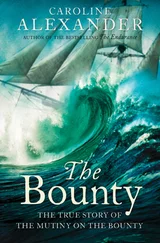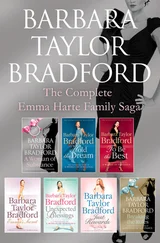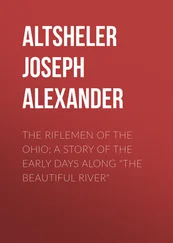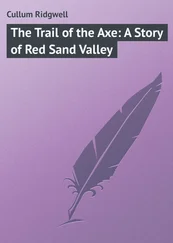A curious disturbance hastened the end of the expedition. When we released a photograph to the local press demonstrating the quality of the embalming, it showed a face apparently that of a contemporary Egyptian male, aged fifty years, eyes closed, cheeks screwed up as if in pain. The public protest almost shut down the site. It was all we could do to obtain permission to perform an autopsy before we were forced to turn the — not “mummy” now but “remains”—over to the authorities for re-burial. This autopsy we conducted, not in the ideally sterile conditions of a laboratory in Cairo, but in the field, with only the instruments and supplies we had on hand.
It is often difficult to determine the cause of death: the embalmer, for all his care with the externalities (that quill, for instance, was the mark of a master), so often destroys the evidence. But in this case we were hopeful — even the blood was identifiable, O-positive, with an elevated leukocyte count — but there was no sign of a pathogen there, nor was there any in the lymphatics. Our pathologist suggested, on evidence of the facial deformation, that we examine the nervous system.
We expected the brain to be missing, as is usually the case: external examination had found the nasal septum unusually damaged, indicating that the extraction had been difficult. But when we cut into the brain-case to sample the stump of the medulla, we found the brain still attached, and intact. No one breathed. It had shriveled into a hard, wrinkled sponge a walnut’s size. When the pathologist touched it with his probe it crumbled; a puff of pollen-yellow dust drifted up, lazy in the spotlight, swirling as we all exhaled, and I imagined I could smell something, imagined I felt something touch the back of my palate, and a hand brush briefly the base of my skull.
There was never any pathogen found. But even had there been, none of us could have known that the condition was still contagious.
Forgive the digression. It is not, of course, a digression. The disease that killed the steward Nur-Mar five thousand years ago has in the past twelve months become the central fact of my existence. There appeared last May, full fifteen years after the opening of Nur-Mar’s tomb, an obscuration — no larger than the full moon — at the center of my vision. At first, I ignored it. At night, as I tried to sleep, it would pulse faintly, tinged with red at its borders. At times it disappeared entirely. Now it is always before me, always there at the center of my vision, a pool of ink, a hole opened in the world, a tunnel toward which I constantly move. I know already where it leads.
Then this winter, around the turn of the year I began to hear the faintest sound, an echo, a whisper, a word murmured softly just behind my head. I began to notice a persistent smell, which I characterized as burnt wiring. This was only a metaphor.
I consulted a neurologist. He ordered tests: dye injections into my carotid artery, CAT scans, NMR sweeps that made my fillings shudder. The tests revealed nothing. The specialist was tactful, suggesting I seek alternative care. I ignored him. Nor did I seek a second opinion.
This was a difficult decision. I did not, finally, arrive at it out of despair: I like to think I am a realist. I am confident that whatever afflicts me is unknown to contemporary medicine, and that no cure exists. I do not know if it will kill me, but I suspect it will. All a doctor could offer me is morphine, and I will not have that. They could, I suppose, also offer guesses as to the date of my demise, but I will not have that, either. And most of all I will not have myself immured in a hospital or otherwise encrypted before my time. As long as I can work, I will continue to do so.
Do not mistake me. There is nothing of nobility about this. My dedication to my work, to knowledge, science, truth, or any of that large body of humbug at which we gesture when we lecture trusting undergraduates, apply for grants, or otherwise seek to present ourselves as something that we’re not — none of that matters now. I have lived among the Egyptians too long to deny my reasons. If I am to die, I will at least erect a fitting monument before I go. My monument? The King: of course the King. If I can find a monarch and a tomb that bring a forgotten period of Egyptian history to light, my name will live long after I am dust — our names will live, linked forever, as Carter’s is with Tutankhamen’s, Maspero’s is with Ramesses’. If my monarch and his tomb be greater than theirs, so much the better. I have reason to suspect they are. I have reason to hope even more.
I brought two secrets with me from Nur-Mar’s tomb. The first, of course, was hidden even from myself. The other I smuggled through customs. It rests on the desk before me as I write. An unprepossessing thing: a plain steatite urn, oviform, apparently IVth Dynasty, approximately thirty centimeters tall, twelve wide.
It was sealed elaborately when I first noticed it among some brittle clay replicas of bread, a great wad of pitch at its mouth, and at first I took it for an odd, fifth canopic jar — perhaps a spare (there are always, in an Egyptian tomb, spares). Then something pressed into the pitch caught my eye: it was a royal cartouche — and this was not a royal tomb. Then I noticed something more, and before I had time to think I had stooped, and concealed the jug inside my shirt. The cartouche was blank. Someone had scraped away the glyphs that once had named a King.
I neither slept nor let the bag out of my grasp throughout the stopover in Kennedy, the limo to LaGuardia, and the commuter hop home. I was exhausted, and it was foolish to attempt anything so delicate as a sealed jar at eleven at night — six A.M. Cairo time. But I did. My hand was shaking as I warmed the pitch, prized it up with a dental probe and spatula. It came away in a single mass, the scars in the cartouche made vague by the heating. A light in the jar showed me what I had suspected: a rolled scroll.
I almost had to break the jar to get it out. As it is, the papyrus cracked in five places. My left hand is red with steam burns. I do not feel them.
I believe it was not in good condition when the jar was sealed. Whoever had wanted to preserve it (and I am convinced that person was the steward with whom it rested) had been in haste: it had been rolled willy-nilly creased and possibly torn. It was also badly burned all along one margin. But it is enough. It tells me that the one I seek did live: the papyrus, I am convinced, is in his hand. He scribed a graceful, formal glyph, each figure fully delineated — archaic even for his time. The text describes plans for a tomb to dwarf the works of the Fourth Dynasty — too large even to fit into the plain at Giza. He sited it up-river, closer to the quarries, in the region that did not become the royal necropolis until centuries after. The scroll also lists more than seven hundred spells, of the ordinary kind that were popularly believed to guard the dead in the underworld of the Duat. And then, before the scroll breaks off (torn, not burned), the syntax, the diction — even the scribing hand — decay. There are many terms I do not recognize. This is not uncommon in hieroglyphs: many signs were invented as needed. But in this scroll the normal alphabet is gone — the abstract determinative is entirely absent, and I am not certain if what I read is code or gibberish. Only one word comes through persistently en clair . The word is rare — I think were I not already interested in the subject I would have failed to recognize it: it is the word for “word of hidden meaning.” It is the word for what I seek.
It is odd. Even now, when I am beyond the reach of ridicule — when not only my professional reputation, but shame and dignity are identically vain — when I am determined nothing will prevent my telling this story, I must pause. The Egyptians invented written language for one purpose only. Not what you think: not to count oxen, order slaves, predict the Nile floods — none of that. A notched stick, properly applied, will serve those functions better than half a thousand glyphs. The Egyptian language had a higher aspiration. Graven in the living rock of a tomb, words would endure when the last breath of the speaker had vanished: words in rock took on a solidity that their makers hoped they themselves would attain in the Duat. For the Egyptian death was not like ours. Their afterlife was physical, and the physical required names. Names gave power in the afterlife: knowing the proper names, and the spells in which to speak them, these were the keys to life everlasting. They persisted in this belief three thousand years at least. Who are we, with our three-hundred-year tradition of empiricism, to say them nay? Not I: what has empiricism done for me lately?
Читать дальше










